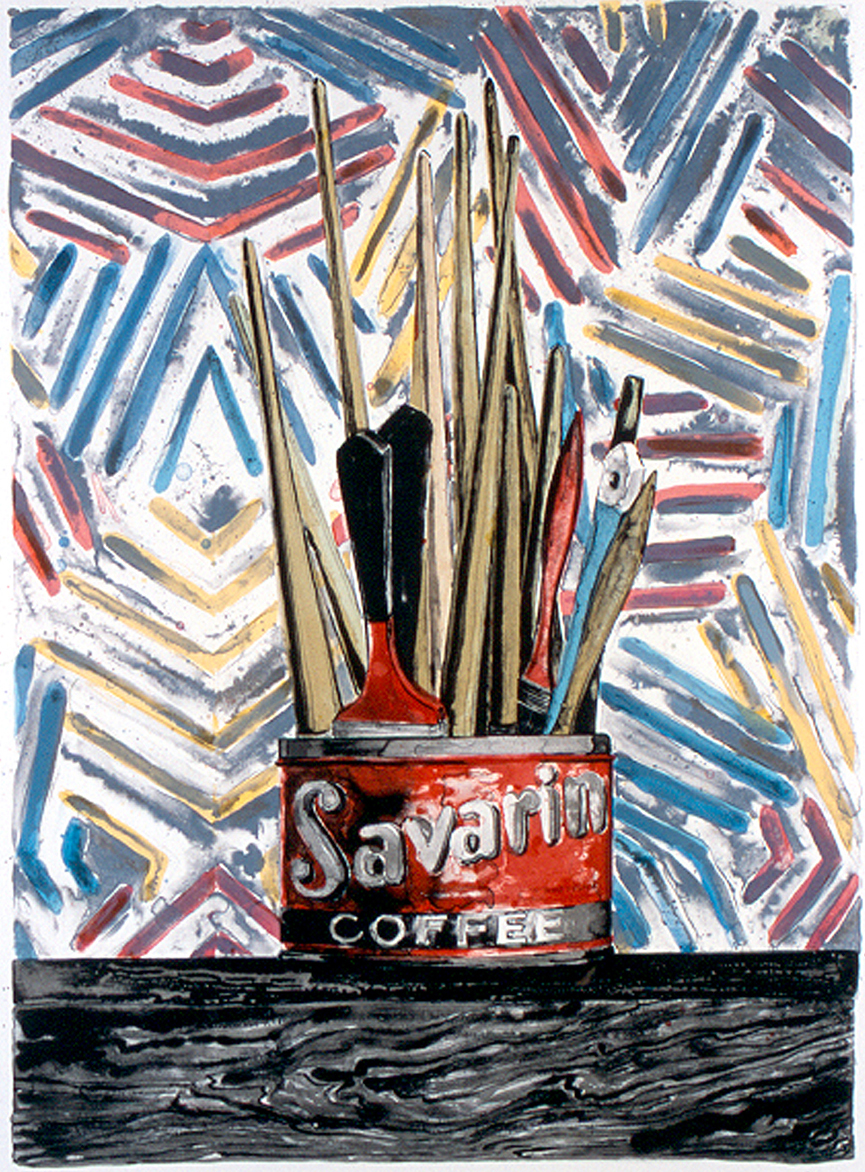

The exhibition opens with early prints from 1960 like Target, Flag III, and 0 through 9, when Johns first experimented with lithography at publisher Universal Limited Art Editions in Long Island, New York. Johns uses the medium to revisit and vary his subjects, transferring, reversing, repeating, and layering imagery in new and exciting combinations. Jasper Johns: Variations on a Theme celebrates the artist’s visionary response to printmaking. While lithography has been his primary technique, Johns has also used intaglio, silkscreen, and lead relief to interpret subjects drawn from popular culture, his earlier work, and the history of art. His interest in making variations of a single motif found a natural outlet in the medium, which allows for the reworking of ideas and records the stages that lead to a final image. Printmaking has been integral to the American artist’s career for more than five decades. Jasper Johns’s creative impulses and collaborations with distinguished print workshops have produced over 360 editions, acclaimed as some of the most pioneering artworks of the last century. Johns currently lives and works in Sharon, Connecticut, New York, and the Caribbean island of Saint Martin. He was presented with the Presidential Medal of Freedom by President Barack Obama in 2011. He represented the United States at the Venice Biennale in 1988 and was awarded the Grand Prix. the Centre Pompidou, Paris and the Kunstmuseum Basel. His works have been exhibited in major museums around the world, including the Metropolitan Museum of Art, New York the National Gallery of Art, Washington, D.C. Some of the iconic motifs that Johns has interpreted throughout his career include: flags, targets, numbers, ale cans, maps of the U.S., the crosshatch pattern, and, more recently, the catenary curve and gestures from American Sign Language. For over 50 years, Johns has challenged the possibilities of printmaking, painting, and sculpture, laying the groundwork for a wide range of experimental artists.

The Museum of Modern Art purchased three pieces from the show, a feat which opened many new opportunities for Johns. Johns’s exhibition at the Leo Castelli Gallery in 1958 was a major turning point in his career his depictions of everyday subjects-“things the mind already knows”-pulled away from the grandeur of Abstract Expressionism and paved the way for Pop Art and Minimalism.

There, he worked as an artist and belonged to an intimate circle of friends that included artist Robert Rauschenberg, composer John Cage, and dancer Merce Cunningham. After attending classes at Parsons School of Design and serving in the army during the Korean War, Johns moved permanently to New York in 1953.

Born in Augusta, Georgia, and raised in South Carolina, Johns wanted to be an artist at an early age. Jasper Johns has been a central figure in modern and contemporary art since the 1950s. Another is to paint out areas of the screen with a liquid that sets and blocks the holes in the mesh. One method is to cut a paper stencil and attach it to the underside of the screen. A design may be applied to the screen in various ways. The final image is printed in its original orientation. Ink is transferred to the paper on the other side. With a squeegee, printing ink is spread over and forced through a screen. The medium exploded in the fine art world in the 1960’s. Harder-wearing polyester meshes, ink technology, and stencil fabrication continued to evolve. In the 1850’s, the Japanese developed stencils held together by silk the first patent for the process was attained in Michigan in 1887. Silkscreen or screenprinting has its roots in wall decoration, ceramics, and fabrics produced by ancient cultures.


 0 kommentar(er)
0 kommentar(er)
